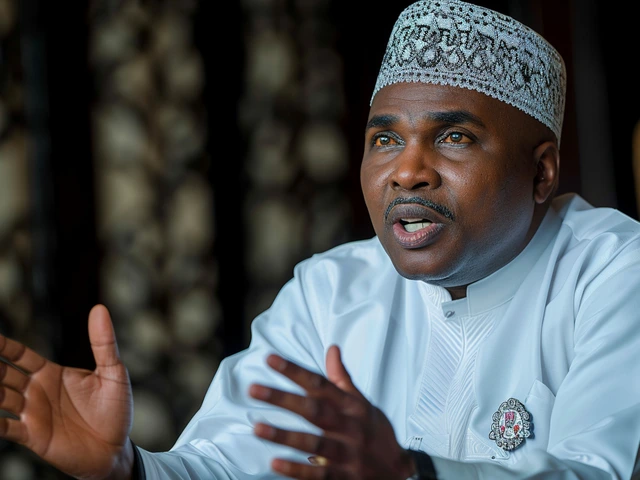Introduction to Nairobi-Nakuru Carriageway Expansion
The Nairobi-Nakuru dual carriageway project has become a focal point in Kenya's infrastructure development ambitions. As President William Ruto recently announced, this massive undertaking is expected to kick off in 2024, targeted to transform the current single-lane route into a more efficient dual carriageway. This project holds the promise of not just reducing congestion but also enhancing the region's economic prospects by facilitating smoother transportation of goods and people.
Reason Behind the Infrastructure Initiative
At the heart of the dual carriageway project is the mounting traffic problem that Kenyans have increasingly faced along this crucial artery. The Nairobi-Nakuru highway is a lifeline for many, especially during peak travel times like festive seasons when it becomes choked with vehicles of all kinds. Recent traffic snarls have underscored the urgency of expanding this route, as travelers found themselves trapped in long traffic jams while attempting to make their way upcountry.
Hiccups in the Initial Plans
The delay in this much-needed road extension wasn't initially anticipated. The rollout of the Nairobi-Nakuru dual carriageway was postponed due to a breach of contract by a French company. This firm had originally forged an agreement with the Kenyan government for the road's upgrade but failed to meet its obligations. As such, the project's timeline was extended, leading to frustrations from stakeholders and citizens alike. Nevertheless, the government has displayed resilience in finding alternative pathways to get the project rolling.
Government's Strategic Approach
The Kenyan government is navigating the road construction via a Public-Private Partnership (PPP) scheme. This approach involves collaborating with private companies willing to invest in the infrastructure development process. President Ruto is optimistic that such partnerships could provide both the capital and the expertise necessary to push through potential roadblocks. The PPP strategy is pivotal, as it allows for sharing the burden of cost while also drawing on private sector efficiencies.
Details of the Construction Phases
The dual carriageway initiative is meticulously planned to unfold in two distinct phases. The first phase covers the stretch from Nairobi to Nakuru, while the second phase extends further to connect Nakuru to Malaba. Each segment requires a strategic plan, balancing both the technicalities of road construction and the logistical needs of minimizing disruption to ongoing traffic. Given the highway's economic and strategic significance, the phasing is designed to ensure the road remains operational throughout the construction period.
Coordination and Traffic Management
The renovation efforts will demand robust coordination and traffic management solutions to counterbalance the inevitable pressure on the existing road network during construction. The Kenya National Highways Authority (KeNHA) has assured the public and motorists that comprehensive measures will be put in place to handle any inconveniences. In collaboration with traffic police, KeNHA is committed to ensuring a systematic flow of vehicles along the highway. They urge drivers to maintain lane discipline and adhere to guidance provided by traffic officers to avert unnecessary delays.
Anticipated Benefits of the Project
The overhaul of the Nairobi-Nakuru route is anticipated to yield long-term benefits, primarily aimed at improving the road's capacity to handle increased traffic volumes. Not only will this development ease persistent traffic woes, but also support regional economic development. By making the transportation of goods and commuters far more efficient, the dual carriageway is forecast to accelerate trade and tourism activities, potentially boosting the local economies of towns along the highway.
Potential Challenges and Government's Resolve
While the project holds much promise, it is not without challenges. Potential hurdles include land acquisition issues, compliance with environmental regulations, and unforeseen financial constraints. President Ruto has, however, reiterated his administration's commitment to overcoming these obstacles by ensuring that all legal and logistical footings are firmly in place. The government’s determination in executing the project serves as a testament to its prioritization of infrastructure as a cornerstone for national progress.
Conclusion: A Path Forward for Kenya’s Infrastructure
The commencement of the Nairobi-Nakuru dual carriageway is more than just a construction project; it is a symbol of Kenya’s resolve to advance its infrastructure to meet the demands of a growing population and regional commerce. As the nation prepares for this crucial next step, Kenyans can look forward to not only the promise of less congested roads but also a bolstered economy supported by improved transport connectivity. Stakeholders and citizens alike await the fruits of this significant investment with optimism, ready to embrace the changes that it will bring.







Write a comment